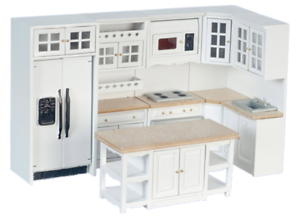The three principle capacities in a kitchen are capacity, planning, and cooking (which Catharine Beecher had effectively perceived), and the spots for these capacities ought to be Kitchens Norwich organized in the kitchen so that work at one spot doesn’t meddle with work somewhere else, the distance between these spots isn’t pointlessly huge, and no hindrances are standing out. A characteristic plan is a triangle, with the cooler, the sink, and the oven at a vertex each.

This perception prompted a couple of regular kitchen structures, generally portrayed by the plan of the kitchen cupboards and sink, oven, and fridge:
The Solitary document kitchen :
A solitary document kitchen (otherwise called a single-direction cookroom or a straight-line kitchen) has these along one divider; the work triangle ruffians to a line. This isn’t ideal, however frequently the solitary arrangement if space is limited. This might be normal in a loft space that is being changed over into a living space, or a studio condo.
The twofold record kitchen :
- The twofold record kitchen (or two-way cookroom) has two lines of cupboards at inverse dividers, one containing the oven and the sink, the other the fridge. This is the old-style work kitchen and utilizes space.
- In the L-kitchen, the cupboards involve two nearby dividers. Once more, the work triangle is safeguarded, and there may even be space for an extra table at a third divider if it doesn’t cross the triangle
- A U-kitchen has cupboards along with three dividers, normally with the sink at the foundation of the “U”. This is an average work kitchen, as well, except if the two other cupboard columns are adequately short to put a table at the fourth divider
- A G-kitchen has cupboards along with three dividers, similar to the U-kitchen, and an incomplete fourth divider, regularly with a twofold bowl sink at the side of the G shape. The G-kitchen gives extra work and extra room and can uphold two work triangles. An altered form of the G-kitchen is the twofold L, which parts the G into two L-molded segments, basically adding a more modest L-molded island or promontory to the L-kitchen
The square Kitchen :
The square kitchen (or island) is a later turn of events, regularly found in open kitchens. Here, the oven or both the oven and the sink are set where an L or U kitchen would have a table, in an unattached “island”, isolated from different cupboards. In a shut room, this doesn’t bode well, yet in an open kitchen, it makes the oven available from all sides to such an extent that two people can cook together, and considers contact with visitors or the remainder of the family since the cook doesn’t confront the divider any more. Furthermore, the kitchen island’s ledge can work as a flooding surface for serving buffet-style dinners or plunking down to have breakfast and tidbits.
During the 1980s, there was a reaction against modern kitchen arranging and cupboards with individuals introducing a blend of work surfaces and detached furnishings, driven by kitchen fashioner Johnny Gray and his idea of the “unfitted kitchen”. Current kitchens regularly have sufficient casual space to take into account individuals to eat in it without utilizing the proper lounge area.